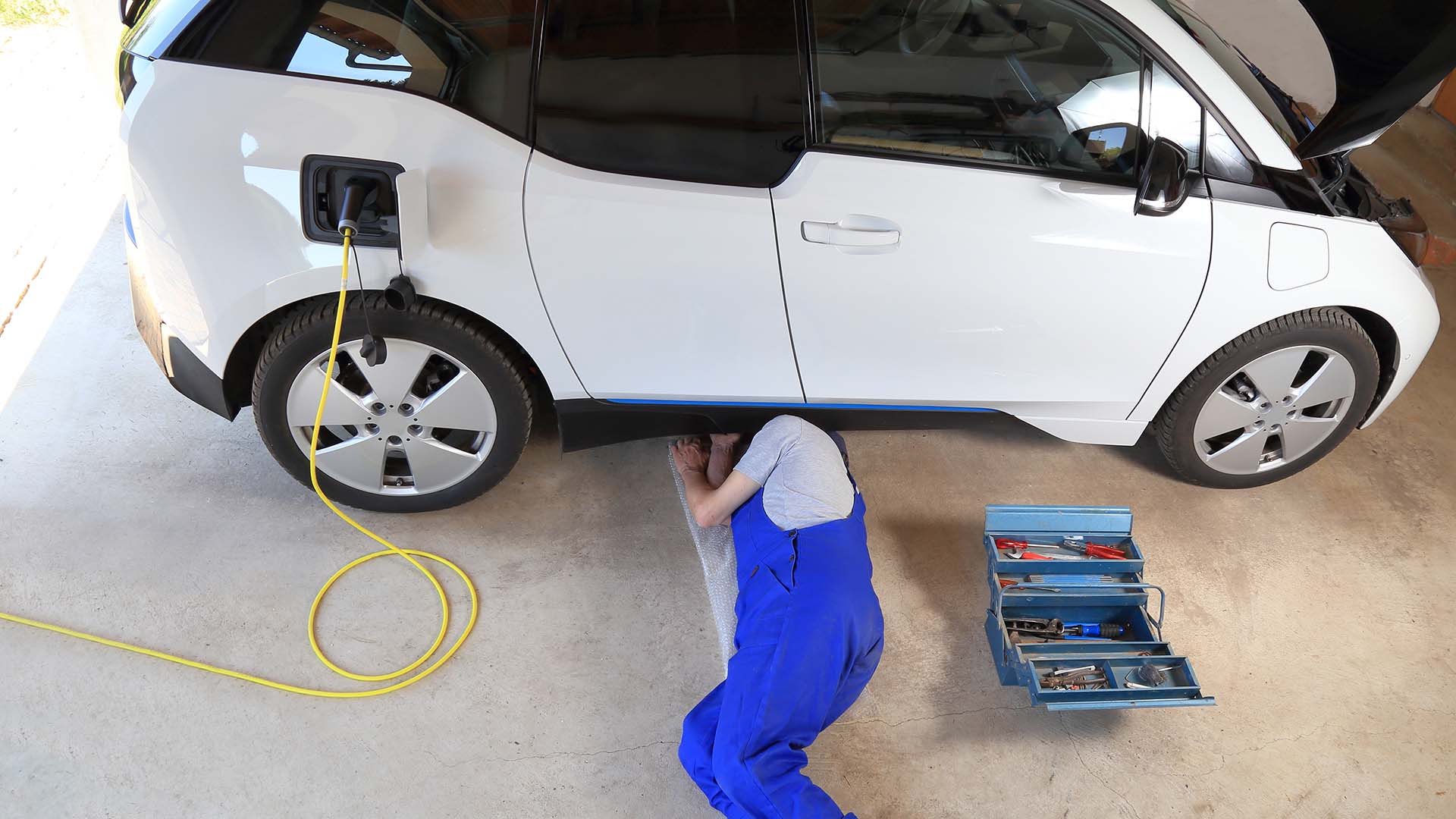Like any car registered in the UK, an EV must pass an MOT once it reaches three years old. From then onwards, it’s subject to the same annual test as a petrol or diesel vehicle.
OK, so the test isn’t exactly the same. For a start, an electric car doesn’t need to pass an exhaust emissions test, because it produces no localised carbon dioxide (CO2). An EV won’t trouble the noise test’s decibel meter either, so that’s another thing you needn’t worry about.
Unfortunately, despite this simpler test, there’s no price reduction for an electric car – so you’ll be charged anything up to the maximum fee of £54.85 for an MOT test. Some garages offer cheaper rates, however, particularly if the test is booked as part of an annual service.
Only test centres showing the official blue sign with three white triangles can carry out an MOT. You should contact your local test centre directly to book in advance.
According to the Driver and Vehicle Standards Agency (DVSA), around 40 percent of cars fail the MOT at the first attempt. However, around half of all faults could have been avoided by carrying out some basic pre-MOT checks.
What is checked during an electric car MOT?

A full list of the areas examined during the MOT can be found on the Gov.UK website. Spending an hour or so checking through these items soon before your car is tested could save you time and money overall.
For example, it’s easy to check the operation of the lights, wipers and horn; the condition of the mirrors and number plates; and measure the tyre tread depth. You might need the help of a friend to test the rear lights, (including brake and reversing lights), but most other items should be straightforward.
Just don’t leave everything until the night before the test is booked, in case you need to order new parts.
A surprising 30 percent of faults found during the MOT test relate to lighting and indicators. And 10 percent of all MOT failures are down to tyres, so make sure the rubber is undamaged and has a minimum tread depth of 1.6mm (preferably at least 3mm).
Visit the Gov.UK website for more information on getting an MOT test for an electric vehicle.
ALSO READ:
What are the differences between a hybrid and an electric car?
What is electric car preconditioning and why should I use it?
Electric cars: understanding the difference between kW and kWh


mvd416